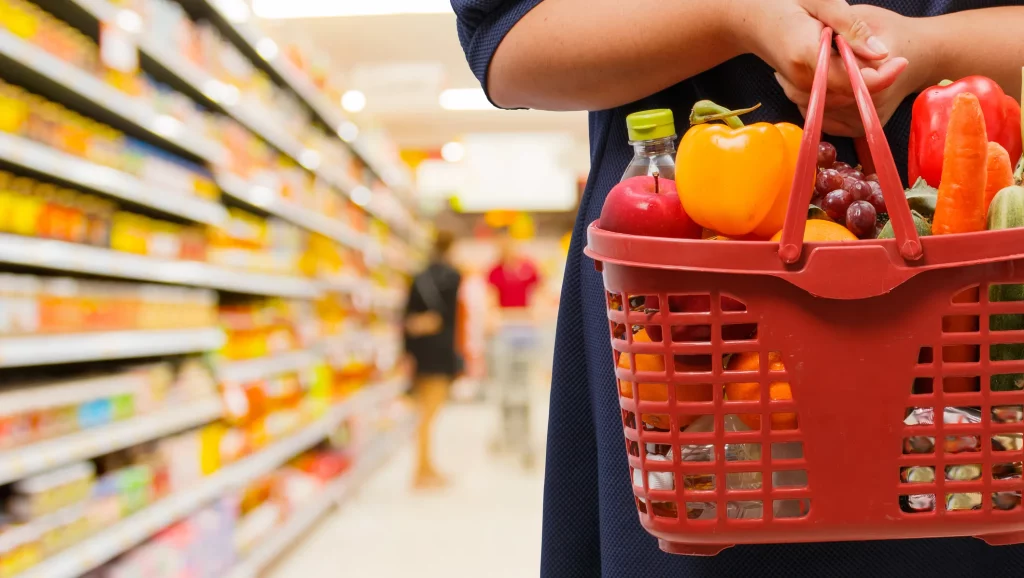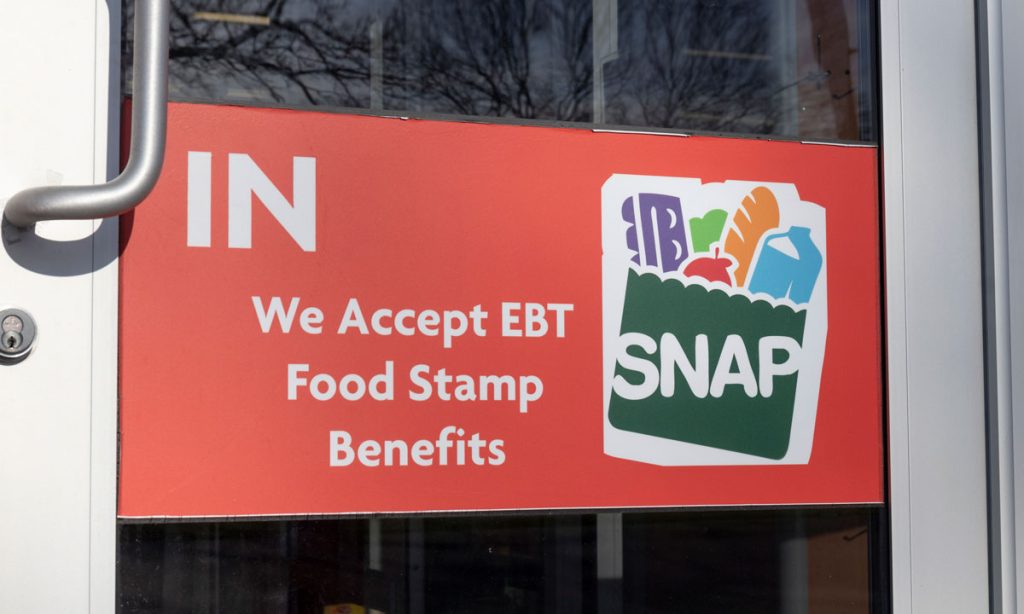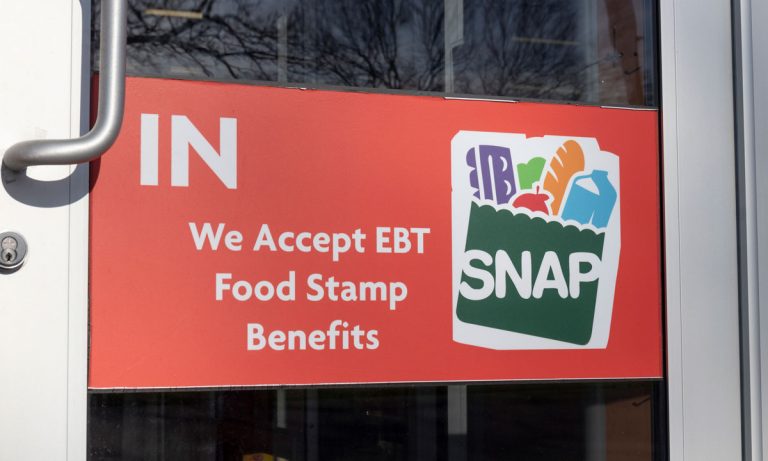Free Grocery Cards
Imagine being able to ease your grocery bills each month without spending a dime. Free grocery cards are becoming a popular way to help families save money on their food shopping. These cards are available through various programs and offer benefits like discounts at your favorite supermarkets or even monthly allowances for healthy groceries.
The cards can be used at major retailers like Walmart, Walgreens, and Kroger, making it easy to access nutritious food. Some healthcare plans, such as Medicare Advantage, even provide grocery allowances to help cover these expenses. By signing up for these programs, you can get essential groceries without breaking your budget.
Many community organizations also offer food assistance, from local food banks to government programs like SNAP and WIC. These programs not only help you get free groceries but also guide you in finding the nearest resources available. Don’t miss out on these opportunities to make your grocery shopping more affordable and stress-free.
What Are Free Grocery Cards?
Free grocery cards are issued by various programs to help individuals, especially seniors, afford groceries. These cards function much like gift cards and can be used at designated grocery stores to buy food items. They do not cover non-food items like vitamins, toiletries, or alcohol. These cards are designed to ensure users can access healthy food without compromising their budget.
Types of Grocery Cards
There are several types of free grocery cards available:
- Medicare Grocery Cards: Issued by specific Medicare Advantage plans, used to purchase healthy food items.
- State-specific Programs: Various state initiatives offer grocery cards to eligible seniors.
- Community-based Programs: Local organizations sometimes provide grocery cards through donations and grants.
Each type has specific eligibility criteria and benefits, so it’s important to research and apply for the ones that best fit your needs.
How Do Grocery Cards Work?
Using a free grocery card is straightforward. You receive a card pre-loaded with a certain amount of money. You can then use it at participating grocery stores to pay for eligible food items. The card will not cover non-food items such as soap, supplements, or pet food.
To get a grocery card, you may need to apply through local agencies, healthcare providers, or community programs. Some cards require regular reloading based on continued eligibility. Remember to check the balance and list of approved items frequently to make the most out of your grocery card program.
Eligibility and Requirements for a Free Grocery Card
Understanding who qualifies for free grocery cards and how to apply is crucial. This section will provide detailed information on both topics.
Qualifying for Free Grocery Cards
To qualify for free grocery cards, specific criteria need to be met:
- Income: You generally need to be in a low-income bracket. Programs like the Supplemental Nutrition Assistance Program (SNAP) require you to meet certain income thresholds.
- Residency: You must be a U.S. citizen or a certain type of legally residing non-citizen. Undocumented non-citizens are not eligible.
- Age and Program-Specific Requirements: Some programs, such as the Senior Farmers’ Market Nutrition Program (SFMNP), are specifically for older adults.
Each program has its unique set of requirements. It’s essential to check the specific guidelines for the program you’re interested in to ensure you meet their criteria.
Application Process
Applying for a free grocery card typically involves several steps:
- Eligibility Check: Begin by reviewing the eligibility criteria for the specific program.
- Gather Documentation: Collect necessary documents like proof of income, residency status, and identification.
- Submit Application: Applications may be completed online, by mail, or in person, depending on the program.
- Verification: After submitting, your application will be reviewed and verified. Be prepared for follow-up questions.
- Notification: You’ll be notified of your approval status and how to receive your grocery card.
Be sure to follow each step carefully and provide accurate information to avoid delays in the approval process.
Benefits of Free Grocery Cards
Free grocery cards offer numerous advantages to individuals, especially in terms of saving money and managing budgets effectively.
Cost Savings
A free grocery card can significantly reduce your monthly expenses on food. By using this card, you can purchase essential groceries like fruits, vegetables, meat, and pantry items at no cost.
This benefit allows you to allocate your budget to other important needs.
Many grocery cards are accepted at a variety of stores, including large chains such as Walmart, CVS, and Kroger. This flexibility ensures you can shop where prices are competitive, stretching your allowance further.
Moreover, these cards often cover not just food but also essential household items, providing even more savings.
Budget Management
Using a free grocery card helps you plan your monthly budget more effectively. You know exactly how much you have available for groceries each month, which simplifies your financial planning.
This can prevent overspending and help you stay within your means.
Grocery cards also encourage healthier eating habits by allowing you to purchase nutritious foods like fresh produce, whole grains, and lean proteins.
This can improve your overall well-being and reduce future healthcare costs. Being mindful of your card’s balance and spending helps instill a disciplined approach to shopping. This can be especially beneficial for those on a fixed income, ensuring essential needs are met without financial strain.
Obtaining Grocery Cards
To get free grocery cards, it’s important to know where to look for these programs and which stores accept them. Eligibility requirements and benefits may differ, so make sure you understand the specifics for your location.
Where to Find Free Grocery Cards

Free grocery cards for seniors are often available through state and federal programs. These include the Senior Farmers’ Market Nutrition Program (SFMNP), which provides coupons for fresh produce. Eligibility typically requires being 60 years or older and having a low income.
Local community centers and social service agencies are also good resources. They often have information about current offers and can help with applications. Some states directly distribute these cards as part of broader nutrition assistance programs.
To apply, you generally need to provide proof of age, income, and residency. Forms can often be found online or at local government offices. It’s essential to apply as early as possible since funds may be limited and distributed on a first-come, first-served basis.
Participating Grocery Stores
Not all stores accept free grocery cards, so it’s important to check where you can use them. Farmers’ markets and community farms are common places that accept SFMNP coupons. These locations allow you to buy fresh fruits, vegetables, honey, and herbs.
Large supermarket chains may accept grocery cards provided through other assistance programs like SNAP. It’s a good idea to check with individual stores to confirm if they accept your specific card. Many stores have lists or signs indicating accepted forms of payment.
Make sure to keep an eye out for any restrictions on eligible food items. Free grocery cards might not cover non-food products, alcohol, or prepared hot meals, depending on the program rules. Always verify the program guidelines for a smoother shopping experience.
Potential Limitations
When using free grocery cards, you should be aware of certain restrictions and expiration dates that could affect their usability and benefits.
Usage Restrictions
Free grocery cards have specific rules about what you can and cannot buy. Generally, these cards won’t cover the cost of vitamins, supplements, or non-food items like soap and toiletries. You also can’t usually use them for baby foods, alcohol, desserts, or soda.
These restrictions mean you need to check the list of approved items before shopping. Most cards focus on healthy food, which you can buy online or in person at certain stores like Walgreens, Walmart, CVS, and Kroger. Always check your card’s fine print to avoid surprises at the checkout.
Expiration Dates
Free grocery cards often come with expiration dates. These dates vary based on the program and provider. You must use the card within a set period to avoid losing the benefits. It’s important to keep track of these dates to make the most of your grocery allowance.
Some cards might have monthly limits, forcing you to spend the balance within that month. Others might allow you to carry over unused funds for a few months. Always refer to the card’s terms to plan your shopping trips accordingly.
Maximizing the Benefits

To get the most out of your free grocery card, follow these simple tips.
Shop During Sales and Promotions: Check for weekly or monthly sales at your preferred stores. Use your grocery card during these times to stretch your benefits further.
Use Store Loyalty Programs: Many stores offer loyalty programs that can be combined with your grocery card. Sign up for these programs to get extra discounts. Some stores even offer special promotions for loyalty members.
Plan Your Meals: Plan your meals ahead of time to make sure you’re buying everything you need. This helps cut down on impulse purchases and ensures that your card covers more essentials.
Buy In Bulk: Consider buying staple items in bulk. Items like rice, pasta, and canned goods often cost less per unit when purchased in larger quantities.
Check Expiration Dates: Make sure to use your grocery card benefits before they expire. Keep track of the expiration dates to avoid losing any unused funds.
Combine with Coupons: Use coupons along with your grocery card to save even more. Look for digital or paper coupons for items you buy often.
Opt for Store Brands: Store-brand products are usually cheaper than name brands and offer similar quality. Choose these products to make your grocery card benefits go as far as possible.
Monitor Your Balance: Regularly check the balance on your grocery card. This helps you plan your shopping trips better and ensures you’re using your benefits to their fullest.
By following these steps, you can maximize the value of your free grocery card, making it easier to manage your grocery budget and ensure you have access to healthy food options.
Legal and Financial Considerations
When considering free grocery cards, you need to be aware of potential tax implications and the risk of scams. Understanding these factors can help you make better decisions and avoid issues.
Tax Implications
Free grocery cards may have tax consequences. Tax rules vary based on the value and type of the card. For example, certain free grocery cards provided through government programs, like SNAP, generally do not count as taxable income.
Charitable donations received in the form of grocery cards may be subject to different tax rules. Always consult with a tax professional to understand specific tax obligations.
In some cases, states might have their own tax regulations for grocery cards. Ensure you know both federal and state tax laws to avoid surprises during tax season.
Scams and Fraud Awareness
Scams targeting seniors with promises of free grocery cards are common. Fraudsters may use phone calls, emails, or online ads to trick you into giving personal information.
Always verify the source before giving any details. Genuine programs will have verifiable contact information and will not ask for sensitive information unexpectedly.
Look out for red flags, such as unsolicited offers or demands for upfront payments, which are typical scam tactics. Reporting suspicious activities to authorities can help protect others from falling victim to fraud.
Stay informed by checking websites and resources from reputable organizations to safeguard yourself against scams.
Alternative Support Programs
In addition to free grocery cards, there are other ways to get support when you need food. These programs can be found through government assistance and community-based initiatives.
Government Assistance
Various government programs can help you get free or low-cost food. These programs include SNAP (Supplemental Nutrition Assistance Program), which provides monthly benefits to purchase groceries. Eligibility is based on income, family size, and other factors.
Another program is WIC (Women, Infants, and Children), designed to help pregnant women, new mothers, and young children. WIC offers vouchers for nutritious foods, along with health care referrals and nutrition education.
Senior Farmers’ Market Nutrition Program (SFMNP) gives coupons to seniors for buying fresh produce from local markets. This helps older adults get healthy food while supporting local farmers.
Community Initiatives
Local organizations and groups often have programs to help you get food. Food banks and pantries are common resources. They distribute groceries through partnerships with local charities and nonprofit organizations.
You can also find meal programs that offer cooked meals at soup kitchens or community centers. These programs focus on providing immediate relief for those in need.
Some areas have gift card initiatives, where organizations distribute grocery store gift cards to families and individuals. This allows you to shop for what you need directly at local stores.
Finally, farm shares and co-ops may offer discounted or free produce to low-income families, ensuring access to fresh, local food.
Frequently Asked Questions
Learn about how to obtain free grocery cards and the various assistance programs available, especially for seniors. Discover the benefits, eligibility requirements, and the truth behind common rumors.
How can low income families obtain free grocery cards?
Low income families can obtain free grocery cards through government assistance programs such as SNAP (Supplemental Nutrition Assistance Program) or local food banks. They may need to fill out forms and provide proof of income and expenses to qualify.
What are the best options for free grocery cards available online?
Several programs offer free grocery cards online. Websites like GetAQuestCard.org provide information on applying for grocery assistance. Many local food banks also have online applications. Remember to check eligibility criteria before applying.
Are there any grocery assistance programs specifically for seniors?
Yes, there are grocery assistance programs for seniors. Seniors can benefit from the Senior Farmers’ Market Nutrition Program (SFMNP) and the Commodity Supplemental Food Program (CSFP). These programs offer nutrition assistance and free grocery cards for eligible seniors.
What benefits do seniors on Medicare have for receiving free groceries?
While Medicare itself does not provide free groceries, some Medicare Advantage plans offer wellness benefits that may include meal delivery services or grocery allowances. Seniors should check with their Medicare Advantage provider to see what benefits are available.
How can senior citizens access Walmart’s free food program?
Senior citizens can access Walmart’s free food program by participating in local food drives and donation events. Some stores partner with community organizations to provide food to seniors in need. Call your local store to find out the specific offerings and eligibility.
What is the truth behind the rumored $900 grocery stimulus for seniors?
The rumored $900 grocery stimulus for seniors is not based on any official government program. It’s essential to verify such claims through trusted sources. Always check with official government websites or reputable organizations to get accurate information about available assistance.

